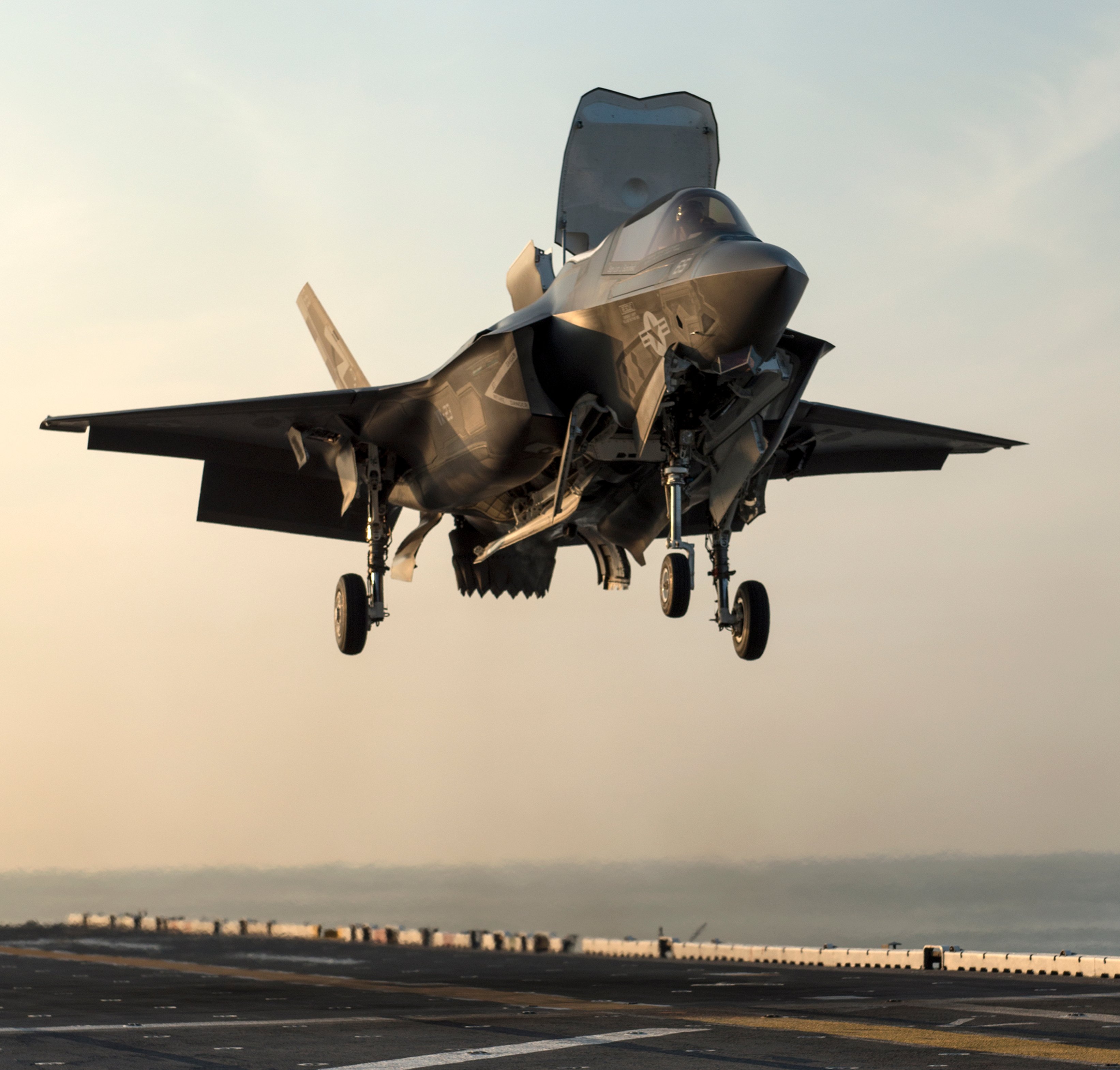
The F-35 program office is confident that the aircraft’s Block 2B software will be ready in time for the U.S. Marine Corps’ planned July 2015 initial operational capability (IOC) date, but a more pressing concern is modifying the existing Joint Strike Fighter fleet to combat-capable standards.
“For the 2B capability that the U.S. Marine Corps is going to use to declare IOC and limited warfighting capability, we are tracking 206 individual capabilities within the software,” U.S. Air Force Lt. Gen. Chris Bogdan, F-35 program executive officer, told the House Armed Service Committee on Wednesday. “As of today, 80 percent of those have been verified as good to go,” he said.
Bogdan expects the remaining 20 percent to be verified by the end of the year.
“I’m within 30 days of completing 2B on time,” he said.
The bigger problem is modifying all of the older aircraft that have already been delivered up to the operational standard, he said. Lt. Gen. Robert Schmidle, the Marine Corps’ deputy commandant for aviation, mirrored Bogdan’s concerns during his testimony.
Bodgan said he is also confident that the Block 3i software—which is the same capability as the Block 2B configuration, but rehosted on improved computer hardware—will also be completed in time for the Air Force’s 2016 IOC date.
Bogdan said he is most concerned about the final Block 3F configuration that the U.S. Navy hopes to declare the F-35C variant operational with in 2019. Currently, that software version will be delivered late if no course corrections are made.
“If we don’t do anything else and we just continue to perform the way we are performing right now and not getting any better, we will be somewhere between four and six months late,” Bogdan said. “It’s as simple as that.”
Bogdan said that he will take action to mitigate the problem, but the Block 3F software is extraordinarily complex. “I’m just projecting that we’re going have some trouble getting it done,” he said.
The Government Accountability Office (GAO) is somewhat less confident about the F-35 Block 3F software development—citing two major risks.
“The first one is just the risk that you don’t get the software completed,” said Michael Sullivan, director of acquisition and sourcing at the GAO.
Sullivan said that the software and sensor fusion capabilities that are required for the final Block 3F are so complex, that the F-35 program may not be able to complete development in a timely manner. At least some within the Air Force expect that many of the capabilities currently envisioned for Block 3F will be deferred past the end of the F-35 development phase into the future—if those capabilities ever materialize.
The second major risk is that the as the software block are delayed, it increases the concurrency between the production and testing of the aircraft, Sullivan said.
“All of that creates cost and inefficiency,” he said.





